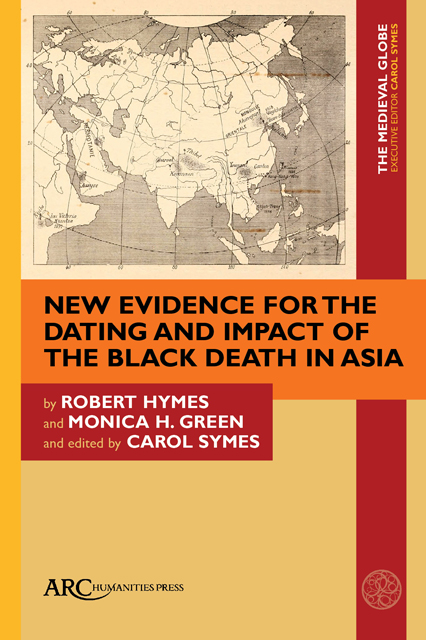Buboes in Thirteenth-Century China: Evidence from Chinese Medical Writings
Published online by Cambridge University Press: 06 April 2023
Summary
IN PATHBREAKING RECENT work, Monica Green has offered the most plausible and comprehensive account to date of the possible routes and mechanisms of the spread of plague across Eurasia in the thirteenth and fourteenth centuries. Green grounds her arguments in the most recent available information on the present distribution of Yersinia pestis strains stemming from before and after the polytomy or “Big Bang” that yielded most surviving strains, as well as on a skillful synthesis of previous historical work. She proposes that the polytomy—the explosive divergence of multiple new strains that bacteriological researchers had previously dated to the late twelfth to fourteenth centuries—originated from the Mongols’ conquest of the Qara Khitai state (1131–1218) in 1216–1218 (see Table 2.1).
Today, prepolytomy strains are found solely in the Tian Shan region of what is now Kyrgyzstan on the western border of China: territory that, from 1124 till the 1218 Mongol conquest, lay within the Qara Khitai (“Black Khitan”) state, also known as Western Liao, founded by Khitan people who had fled the Jurchen conquest of their original Liao state (907–1125) to the east. Green argues that the Mongols’ conquest of Qara Khitai brought them into first contact with the bacillus there, whence their own movements carried it to other parts of Eurasia, while shipments of grain ultimately brought it within reach of Europe. Green has generously treated my previous work as foundational for the view that plague was already in China in the early decades of the thirteenth century and was associated with Mongol sieges in multiple cities in North China under the Jin state. She notes the provocative coincidence of patterns in my findings for China with what is now known about plague in Western Asia: that outbreaks were not simply associated with Mongol sieges but began after the sieges were lifted. In my own view, my previous work had not placed its claim on a firm enough foundation, but simply framed a hypothesis. On the one hand more positive evidence was needed, while on the other hand a glaring historiographic issue remained largely unaddressed: if the Black Death was in China before it was in Europe, why don’t we already know?
- Type
- Chapter
- Information
- Publisher: Amsterdam University PressPrint publication year: 2022

